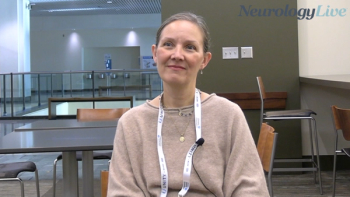
Evias Plus Simulation System Improves Thrombectomy Training
The Biomodex-developed models have also been studied in pre-procedural rehearsal for brain aneurysms.
Biomodex has partnered with medical centers in France, where the digital health company is based, and the United States to develop Evias Plus, a training simulation system of models aimed at becoming a solution for the
Raphael Blanc, MD, co-chief interventional neuroradiologist, Fondation Adolphe de Rothschild, Paris, France, said in a statement that “mechanical thrombectomy (MT) has revolutionized the neurological outcome of acute IS patients. Nonetheless, still a large proportion of eligible patients are not treated with MT because of a lack of physicians trained to perform this procedure in an emergency. We therefore have an urgent need to train more physicians to offer this treatment to more patients. This new simulation solution offers highly realistic navigation sensations with the possibility to switch within minutes from one anatomy to another.”
Evias Plus for Thrombectomy Training
Evias Plus allows neurointerventionalists to stimulate fluoroscopy-guided procedures in a real-life catheterization laboratory environment. The training models come with several realistic, 3D-printed blood vessel models or cartridges plugged into a station that simulated systemic blood flow. The system uses proprietary Biomodox Bloodsim technology to replicate blood density and viscosity.
The system also includes a biobased clot, injection system, and distal filter for clot collection or validation of retrieval. It also allows femoral access and has an adjustable, tissue-like aortic arch that can be customized for specific patients, including right and left radial and femoral access accessories.
“Thrombectomies are very complex in nature and carry a high risk of complications. What’s more, these procedures continue to evolve, given the development of new devices and approaches, requiring neuroradiologists to continually advance their skills,” added interventional neuroradiologist Francois Eugene, MD, from Centre Hospitalier Universitaire, Rennes, France, one of the partnering medical centers, to the statement.
WATCH NOW:
IS, accountable for 87% of all strokes in the US, is typically treated by either aspiration, MT, or a combination of both methods. These procedures involve inserting a catheter into an artery in the arm or groin and, under X-ray guidance, moving it towards the blood clot, a maneuver that requires trained precision.
Ajay Wakhloo, MD, chief, interventional radiology, Beth Israel Lahey Health, another collaborative partner of Biomodex, also added to the statement, saying that “Biomodex’s advanced training system is a significant improvement over traditional training approaches because the models are incredibly realistic and allow us to gain hands-on training for the manipulation of catheters under fluoroscopy. We can also practice navigating realistic aortic arch anatomies ranging from common to complex."
Clinical Study of Evias Plus Models for Brain Aneurysms
Biomodex additionally announced that Evias Plus models were evaluated for use in physician pre-procedural rehearsal for brain aneurysm treatment in July 2020. A clinical study investigated 8 patients with brain aneurysms scheduled for treatment using new devices or techniques. These techniques included robotic arm-stent-assisted coiling treatments in 2 patients and the first time use of new-generation flow-diverter stents in 6 patients. All rehearsals and procedures were performed by senior author Vitor Mendes Pereira, MSc, MD, neurosurgeon and neuroradiologist, Toronto Western Hospital, Canada.2
Models were based off of patients’ computed tomography angiography (CTA) scans. Proprietary Biomodex Invivotech material simulated aneurysm and tissue biomechanics, while photopolymers provided tactile feedback.
The clinical study found reliable reproduction of aneurysm features and similar dimensions of the parent vessel anatomy between the 3D models and patient anatomy. Pre-surgical in vitro simulation yielded an improved patient treatment plan, which contributed to successful first in-world procedures with no intraprocedural complications.3
The authors concluded that pre-procedural rehearsal with the Evias models provided precise procedure planning, which can potentially lead to greater operator confidence, decreased radiation dose and improvements in patient safety, particularly in first in-human experiences.
REFERENCES
1. Biomodex teams up with physicians at three of the world’s top medical centers to develop a cutting-edge training solution for treatment of ischemic stroke. News release. Biomodex. Published online February 1, 2021. Accessed February 16, 2021. https://www.cathlabdigest.com/content/biomodex-teams-physicians-three-worlds-top-medical-centers-develop-cutting-edge-training-solution-treatment-ischemic-stroke
2. BIOMODEX announces results of first clinical study using patient-specific brain aneurysm models for pre-procedural rehearsals. News release. Biomodex. Published online July 1, 2020. Accessed February 16, 2021. https://www.biomodex.com/news/press-releases/2020/first-clinical-study/
3. Yamaki VN, Cancelliere NM, Nicholson P. Biomodex patient-specific brain aneurysm models: the value of simulation for first in-human experiences using new devices and robotics. J Neurointerv Surg. 2021; 13: 272-27
Newsletter
Keep your finger on the pulse of neurology—subscribe to NeurologyLive for expert interviews, new data, and breakthrough treatment updates.



































